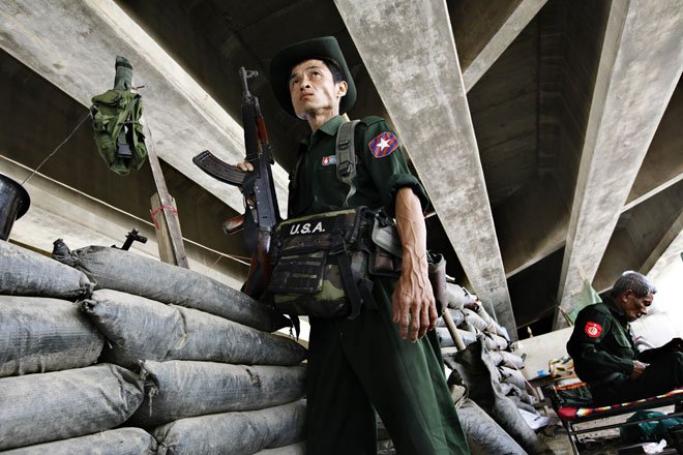Human rights violations may have dropped over the last three years in Kayin State but Myanmar government soldiers have been quietly, or in some cases, noisily building an increased presence.
That is the message from the Karen Human Rights Group in a press release received on February 18 that provides details of Tatmadaw activity in a region that is supposed to be at peace.
Following the January 2012 ceasefire between the Karen National Union and the Myanmar government, villagers have consistently reported to the NGO that Tatmadaw soldiers have moved with greater ease and frequency throughout the NGO’s research areas in southeastern Myanmar, causing feelings of insecurity and anxiety among villagers.
The rights group has received information regarding various aspects of ongoing militarisation, including the Tatmadaw repairing and constructing roads for military use, resupplying their camps with ammunition and food, and strengthening and repairing camps in Toungoo, Nyaunglebin, Hpapun and Dooplaya districts in southeastern Myanmar.
For example, in Toungoo District, villagers reported that when the Tatmadaw are transporting rations and ammunition, despite the fact that the ceasefire is in place and that they are not disturbed by the Karen National Liberation Army, they continue to fire mortars in civilian areas to deter KNLA ambushes. As a result, villagers in this district are worried that fighting will resume again. The Tatmadaw, although they have signed the ceasefire, are transporting rations and ammunition in greater numbers than are needed, according to local civilians.
In Bu Tho Township, Hpapun District, villagers reported that while they had seen a reduction in Tatmadaw patrolling and other activities, they have experienced an increased presence of two Border Guard Force battalions, who have been active in the area since the ceasefire.
Overall, based on the NGO’s reporting since the 2012 preliminary ceasefire, villagers in southeastern Myanmar have experienced a reduced number of human rights violations committed by armed groups. However, when villagers see the increase in Tatmadaw military activities in the region, it increases feelings of insecurity, and makes them fear that fighting will reoccur.
You are viewing the old site.
Please update your bookmark to https://eng.mizzima.com.
Mizzima Weekly Magazine Issue...
14 December 2023
Spring Revolution Daily News f...
13 December 2023
New UK Burma sanctions welcome...
13 December 2023
Spring Revolution Daily News f...
12 December 2023
Spring Revolution Daily News f...
11 December 2023
Spring Revolution Daily News f...
08 December 2023
Spring Revolution Daily News f...
07 December 2023
Diaspora journalists increasin...
07 December 2023
Naungcho to be transformed into tourist destination












